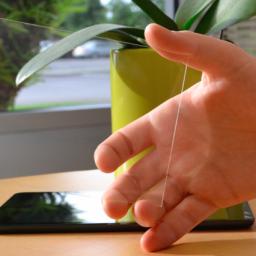Transparent solar cells that could power skyscrapers
 Research has boosted solar panel efficiency over time. But some scientists argue that to truly take advantage of the sun's power, we also need to expand the amount of real estate that can be outfitted with solar, by making cells that are nearly or entirely see-through, i-e transparent cells.
Research has boosted solar panel efficiency over time. But some scientists argue that to truly take advantage of the sun's power, we also need to expand the amount of real estate that can be outfitted with solar, by making cells that are nearly or entirely see-through, i-e transparent cells.A Silicon Valley start-up named "Ubiquitous Energy" has succeeded in creating such transparent solar cells. ClearView is a transparent solar cell that can coat any surface, including displays and windows, to harvest ambient light and generate electricity. Ubiquitous Energy has redesigned the solar cell to selectively transmit light visible to the human eye while absorbing only the ultraviolet and infrared light and converting it into electricity.
Read more from...
That doesn't seem to mesh with their goal of completely eliminating the need for batteries in small consumer gadgets and even smart phones, as LED lighting doesn't emit ultraviolet or infrared, and there isn't always a window nearby. Still a potentially revolutionary technology in other applications, but unfortunately it's in the very, very early stages of development.
http://www.digitaltrends.com/cool-tech/ubiquitous-energy-transparent-solar-power-timeline/
In addition, HEAT reduces panel efficiency. So allowing lots of unused light right through will offer a small improvement in efficiency, by itself.Because billions of people live at high latitudes. They need energy, too. Power lines over running thousands of kilometers have huge losses. We haven't gotten superconductors to work quite yet, and even if we did, the up-front construction costs would be huge.The "transformers and grid connections" wouldn't be located on the sides of the skyscraper (perhaps in the dropped-ceilings), so no additional maintenance burden there. The "mounts" already exist to hold windows in place, and window washers are already routine, so no additional expenses there. There will be just a little more expense in routing electrical lines from the panels, which wouldn't be required with plain windows.Nothing wrong with that, but it's not as if these efforts will somehow slow or stop the production of traditional PV panels. People in less-than-ideal conditions for existing solar panels would like to get some of the benefits, too, and there's no reason to stop them.